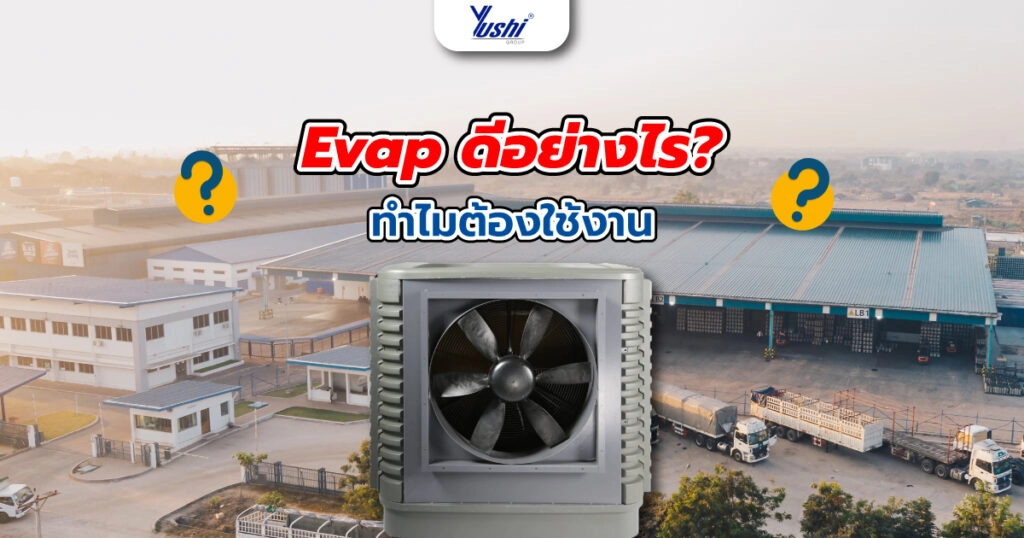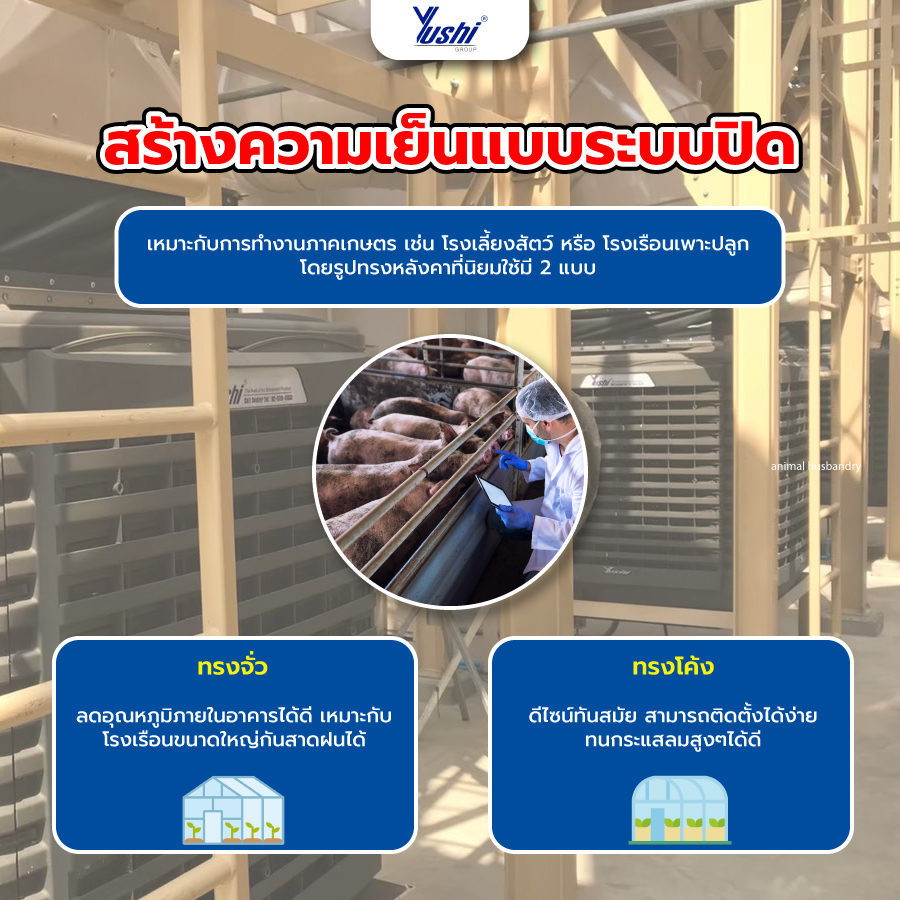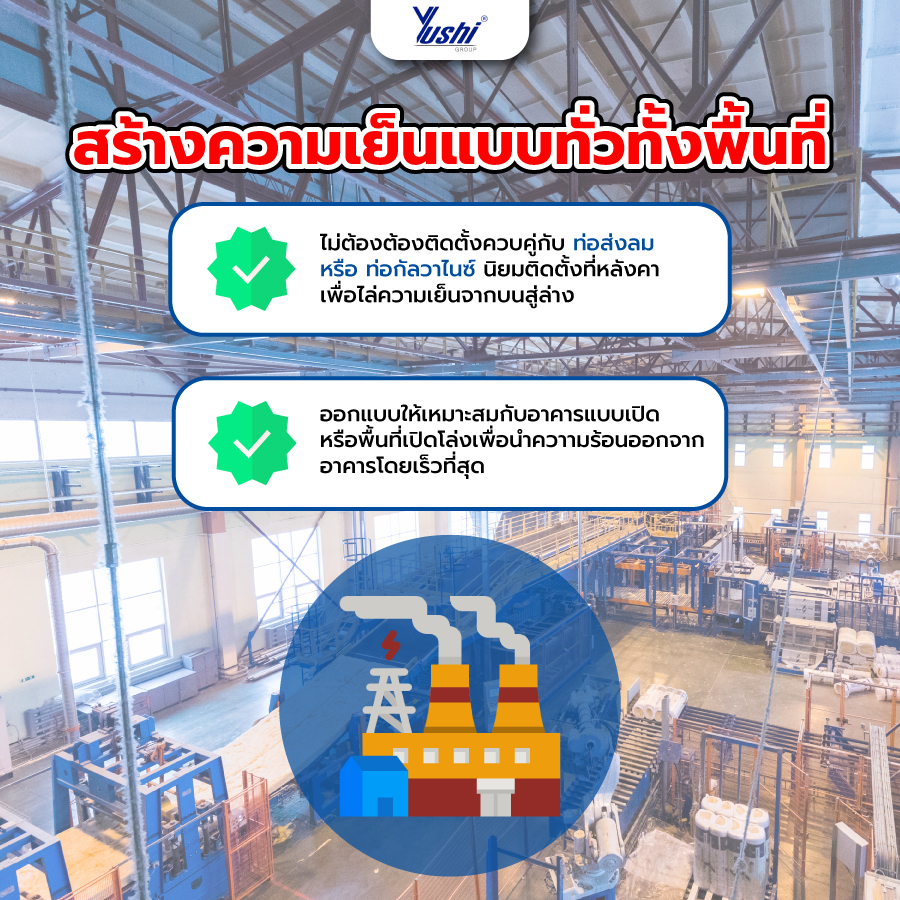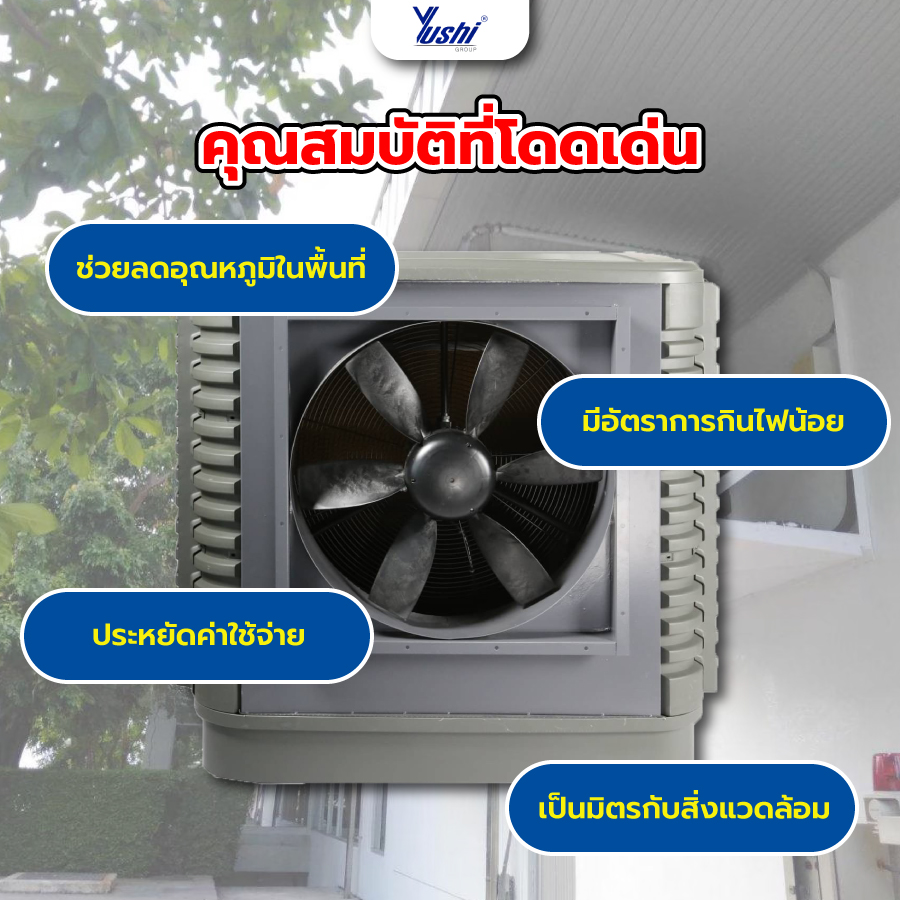Evap ดีอย่างไร? ทำไมต้องใช้งาน

ในพื้นที่ของโรงงานอุตสาหกรรมที่มีขนาดใหญ่ ในบางโรงงานจะมีการติดตั้ง ระบบอีแวป (Evap) เพื่อไม่ให้พื้นที่ด้านในมีความร้อนสะสมอยู่มากจนเกินไป เพราะด้วยหลักการทำงานของระบบที่มีความสามารถในการลดอุณหภูมิ จึงทำให้ใครหลายคนต่างให้ความสนใจ
แต่สำหรับใครที่กำลังสงสัยว่าระบบอีแวปดีอย่างไร วันนี้ Yushi Group จะพาคุณมาทำความรู้จักกับระบบให้ดีมากยิ่งขึ้น โดยมีหลายรูปแบบให้เลือกใช้ เพื่อความเหมาะสมของพื้นที่หน้างาน ถ้าพร้อมแล้วไปอ่านบทความนี้กันเลย!
ระบบอีแวป คืออะไร ?
ระบบอีแวปเป็นระบบทำความเย็นประเภทหนึ่ง ที่มีน้ำเป็นองค์ประกอบหลัก ซึ่งความเย็นที่เกิดขึ้นนั้นไม่อาจเทียบเท่าได้กับเครื่องปรับอากาศ แต่ยังคงสามารถลดอุณหภูมิภายในพื้นที่ได้ 4 – 10 องศาเซลเซียส (ขึ้นอยู่กับพื้นที่หน้างาน) และอากาศที่นำมาใช้เป็นอากาศบริสุทธิ์ ช่วยให้ภายในอาคารมีออกซิเจนเพิ่มขึ้น
โดยการผลิตระบบให้กลายเป็นพัดลมอีแวป จะมีอุปกรณ์หลักอย่าง แผ่นทำความเย็น, โครงรางน้ำ และตู้ควบคุม ที่มีหน้าที่การทำงานในการสร้างความเย็นที่เกิดขึ้นของน้ำ จึงทำให้กระบวนการทำงานไม่ซับซ้อน ทำความเข้าใจได้ง่าย
Why Use Evaporative Cooling?
Evaporative Cooling (Evap) - Benefits and Applications:
What is Evaporative Cooling?
Evaporative Cooling is a type of cooling system that uses water as a primary component. The cooling effect achieved is not comparable to air conditioning systems but can still reduce the temperature within an area by 4-10 degrees Celsius, depending on the workspace. It involves the use of cooling pads, a water distribution framework, and control panels. The system creates a cooling effect by evaporating water, enhancing the oxygen levels inside the building.
Why Use Evaporative Cooling?
Cost-Effective: Evap systems are generally more energy-efficient and cost-effective than traditional air conditioning systems.
Simple Operation: The process involves straightforward steps, making it easy to understand and manage.
Temperature Reduction: Evap systems can reduce the temperature within a closed area, providing a more comfortable working environment.
Increased Oxygen Levels: By using fresh air, Evap systems contribute to higher oxygen levels within the building.
Various Applications: Evaporative cooling comes in different forms to suit various workspaces.
Evaporative Cooling System Configurations:

Closed System Cooling:
Suited for closed and sealed spaces.
Requires additional exhaust fans to control humidity.
Ideal for agricultural applications, such as livestock farms or greenhouses.
Point-Specific Cooling:
Implemented with air ducts or galvanized pipes.
The system is installed externally, and cooled air is directed to specific points.
Suitable for areas where localized cooling is required, adaptable for large spaces with high airflow needs.
Advantages of Evaporative Cooling:

Easy Installation: Can be easily installed and withstands high wind loads.
Conclusion:
Evaporative Cooling systems, with their cost-effectiveness, simplicity, and adaptability, offer an excellent solution for maintaining comfortable working conditions in large industrial spaces. They find applications in a range of environments, from agricultural facilities to manufacturing plants, providing energy-efficient and effective cooling. The choice between closed and point-specific systems depends on the specific needs of the workspace, offering flexibility in design and installation.
Evaporative Cooling Features in Spot Cooling:
Evaporative cooling in a spot cooling configuration must be designed to suit the working conditions of the factory, such as machinery in operation generating accumulated heat in the area or workers stationed in the same position for an extended period. The release of cool air at specific points helps directly cool those areas, effectively reducing the temperature.







 Facebook
Facebook Line
Line YouTube
YouTube Shopee
Shopee